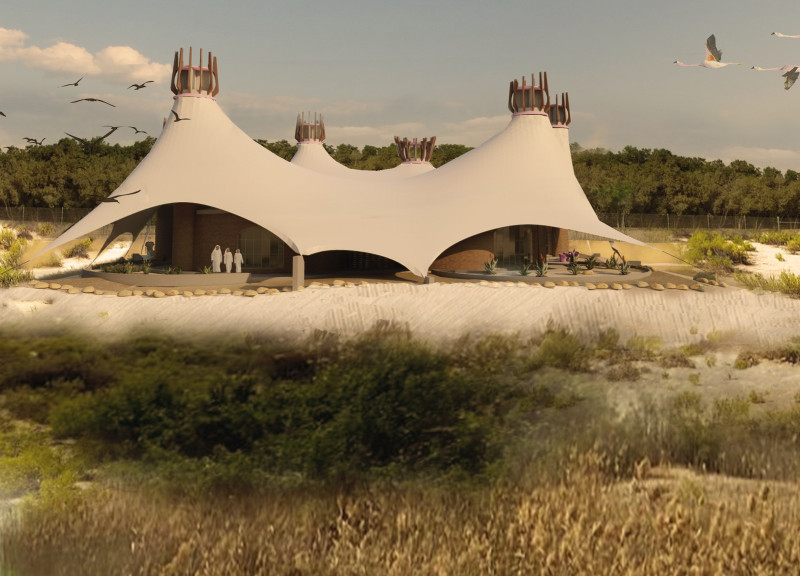5 key facts about this project
The Abu Dhabi Flamingo Visitor Center is located in the Al Wathba Wetland Reserve, serving as a space for education and exploration of the local wildlife. It specifically focuses on the flamingos that inhabit this unique environment. The design concept takes cues from the natural shapes and forms of flamingo nests, influencing both the aesthetic and functional aspects of the building.
Architectural Form and Spatial Configuration
The building features several circular volumes that mimic the shape of flamingo nests. This approach creates diverse functional spaces while promoting a strong connection to the natural surroundings. Each area is designed to inspire curiosity and encourage visitor engagement, making the experience more immersive.
Climatic Response and Passive Cooling Strategies
Addressing the hot and dry climate of Abu Dhabi is crucial for visitor comfort. The design incorporates several passive cooling methods. By carefully positioning the structure and adding a climate veil, the design limits direct sunlight exposure and heat gain. Wind towers enhance air circulation, providing natural ventilation that reduces the need for mechanical cooling systems.
Daylighting and Material Selection
Natural light plays a significant role in the visitor center’s design. Large panorama windows offer views of the wetland landscape, creating a visual connection with the outdoors. The approach to daylighting includes sidelighting and toplighting to ensure that spaces remain bright and inviting. The primary material used for construction is brick, recognized for its strength and thermal properties. Local coral and shell stone also feature in the design, adding to the building's environmental responsiveness.
Visitor Engagement and Interaction
The center includes exhibition areas specifically designed to encourage interaction and learning about the local ecosystem. A central courtyard acts as a lively hub for visitors, facilitating movement and social engagement. This area not only connects different functions of the center but also serves as a spot from where visitors can observe the wetlands. The thoughtful relationship between the interior spaces and the surrounding environment enhances the overall experience, allowing guests to appreciate the beauty of the natural world.
The details of the building enhance this relationship, ensuring that visitors can fully engage with both the educational elements and the stunning landscape that surrounds them.






















































